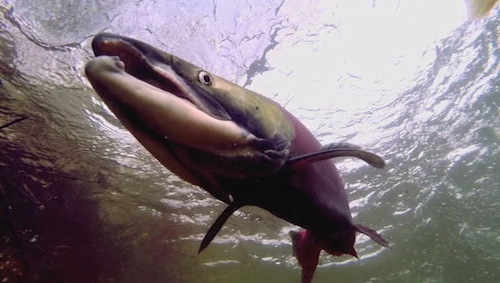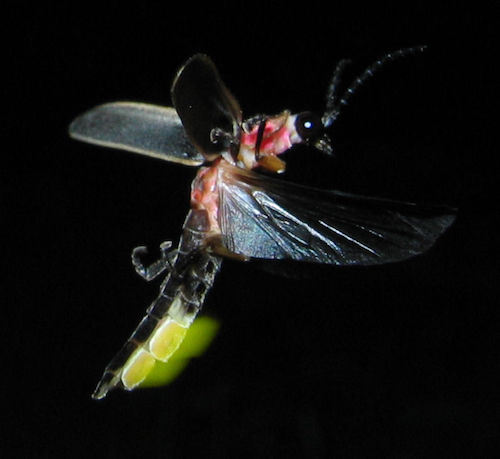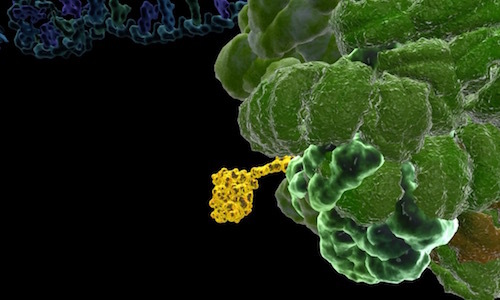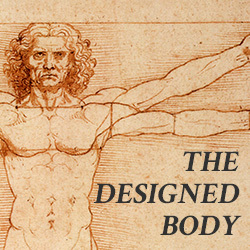Discovery Institute's Blog, page 120
October 29, 2015
More "Design of Life" Evidence: Salmon and Other Fish

There are a couple of neat facts about salmon that Living Waters didn't have time to tell you about. In past articles we elaborated on their incredible sense of smell and the transformation they go through from fresh water to salt water, but there's more. Have you ever heard of the "lateral line"? No, it's not a football play. It's a sense organ shared by most fish, including sharks and salmon.
Lateral Line
The lateral line has been called a "sixth sense" for fish. It runs from gills to tail...
October 28, 2015
Ten Years After the Dover Case, Judge Jones Misunderstands His Critics

The York Daily Record, a newspaper near Dover, Pennsylvania, has been running a series of articles on the tenth anniversary of the Dover ruling. In one of those articles, Judge John Jones -- who ruled against intelligent design in the Kitzmiller v. Dover case -- does a Q&A, In the exchange, he takes on unspecified critics of his ruling regarding the legal tests he used and his reliance on precedent. Here's what he says:
What are some of the other misconceptions with the ruling?I would say th...
Washington Post Promotes Misinformation from the National Center for Science Education

Some reporters see themselves more as activists than deliverers of the news. In the past, we've written about inaccurate and partisan reporting by Washington Post education writer Valerie Strauss. She's been doing this for a long time.
Back in 2004, John West documented how Strauss refused to accurately report that Discovery Institute opposes pushing ID into public schools. In 2013 we noted her false claims that academic freedom bills would authorize the teaching of "creationism." She corre...
"Molecular Clock" Can't Save Darwin from the Cambrian Explosion

Current Biology has published yet another attempt to explain away the Cambrian explosion. On reading certain parts, you might think the authors, including Maximilian Telford, Philip Donoghue, and Ziheng Yang, have solved the problem. Indeed, their first Highlight in the paper summary claims, "Molecular clock analysis indicates an ancient origin of animals in the Cryogenian." (Cryogenian refers to the Precambrian "cold birth" era about 720 to 635 million years ago.) By itself that statement w...
October 27, 2015
Listen: Electricity and Bioluminescence

On a new episode of ID the Future, hear about electricity and bioluminescence, as highlighted in Dr. Geoffrey Simmons's book, Billions of Missing Links: A Rational Look at the Mysteries Evolution Can't Explain.
Click here to download the episode:
Listen in and learn about how a knee-jerk reaction, eels, and the knife fish all use electrical impulses.
Image: Firefly, Photinus pyralid, by art farmer from evansville indiana, usa, [CC BY-SA 2.0], via Wikimedia Commons.
Proteins by Accident? Replying to a Critic of The Information Enigma

Stephen Meyer and I appear in a new video from Discovery Institute, The Information Enigma, that shows how the information in DNA and proteins provides strong evidence for intelligent design. At the YouTube channel for the Center for Science & Culture, the video has generated some spirited discussion, which is good.
One commenter, who goes by the name ExtantFrodo2, has risen to the defense of Darwinism by enlisting several familiar Darwinian arguments, all of which make the evolutionary inve...
Are Hexagons Natural?

Hexagons (at least macroscopic ones) are relatively rare in nature. The most common place we see them is in beehives. It could be argued that if bees are intelligently designed, for which there is ample independent evidence, then the structures they create are also intelligently designed. We might argue that hexagons are the most efficient packing spaces for the least amount of material. We might point out that the design also provides more robust protection against stress than square-shaped...
October 26, 2015
Humans Are More than Mammals

The New York Times, a newspaper dedicated to undermining human exceptionalism, publishes such subversive advocacy regularly. The latest example, by English professor Randy Laist in yesterday's Sunday Review section, says we should identify as mammals rather than humans. From "Why I Identify as Mammal":
In a world of conscious beings, identity matters. Self-perception plays a vital role in behavior, so the question of how human beings think about themselves in relation to the world is more th...
Is Evolution Random? Answering a Common Challenge

Evolutionists often challenge us for referring to Darwinian evolution as "random." They point to the fact that natural selection, the force that supposedly drives the train, always selects more "fit" organisms, and so is not random. That is only part of the story, though, and to understand why evolution can indeed be called random, the rest needs to be told.
Evolution can be considered to be composed of four parts. The first part, the grist for the mill, is the process by which mutations ar...
Blood Clotting Requires Three Different Processes Working Together

Editor's note : Physicians have a special place among the thinkers who have elaborated the argument for intelligent design. Perhaps that's because, more than evolutionary biologists, they are familiar with the challenges of maintaining a functioning complex system, the human body. With that in mind, Evolution News & Views is delighted to present this series, "The Designed Body." For the complete series, see here. Dr. Glicksman practices palliative medicine for a hospice organization.
 Let's re...
Let's re...
Discovery Institute's Blog
- Discovery Institute's profile
- 15 followers




